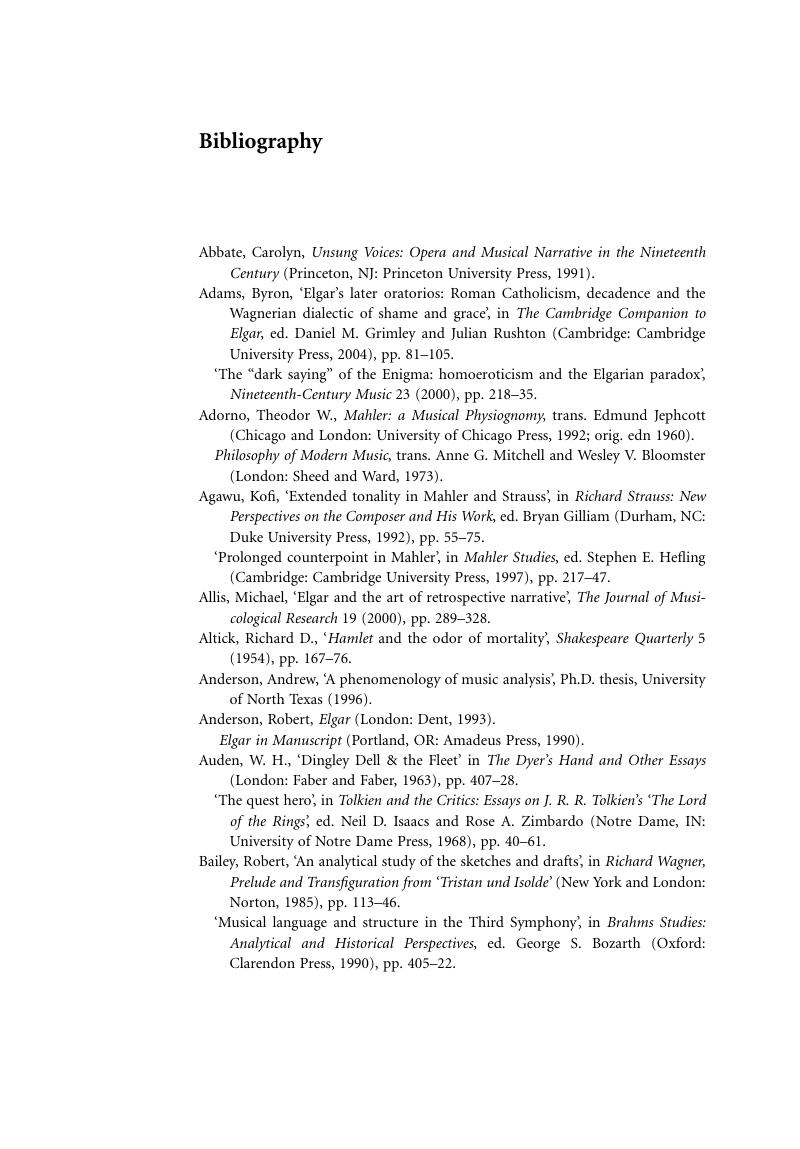Book contents
- Frontmatter
- Contents
- Preface
- 1 Styles and ideas
- 2 A Heideggerian refinement of Schenker's theory
- 3 Immuring and immured tonalities: tonal malaise in the First Symphony, Op. 55
- 4 ‘Fracted and corroborate’: narrative implications of form and tonality in Falstaff, Op. 68
- 5 Hermeneutics and mimesis
- 6 The annihilation of hope and the unpicking of identity: Elgarian hermeneutics
- 7 Modern music, modern man
- Glossary
- Bibliography
- Index
- References
Bibliography
Published online by Cambridge University Press: 03 May 2010
- Frontmatter
- Contents
- Preface
- 1 Styles and ideas
- 2 A Heideggerian refinement of Schenker's theory
- 3 Immuring and immured tonalities: tonal malaise in the First Symphony, Op. 55
- 4 ‘Fracted and corroborate’: narrative implications of form and tonality in Falstaff, Op. 68
- 5 Hermeneutics and mimesis
- 6 The annihilation of hope and the unpicking of identity: Elgarian hermeneutics
- 7 Modern music, modern man
- Glossary
- Bibliography
- Index
- References
Summary

- Type
- Chapter
- Information
- Edward Elgar, Modernist , pp. 239 - 246Publisher: Cambridge University PressPrint publication year: 2006

